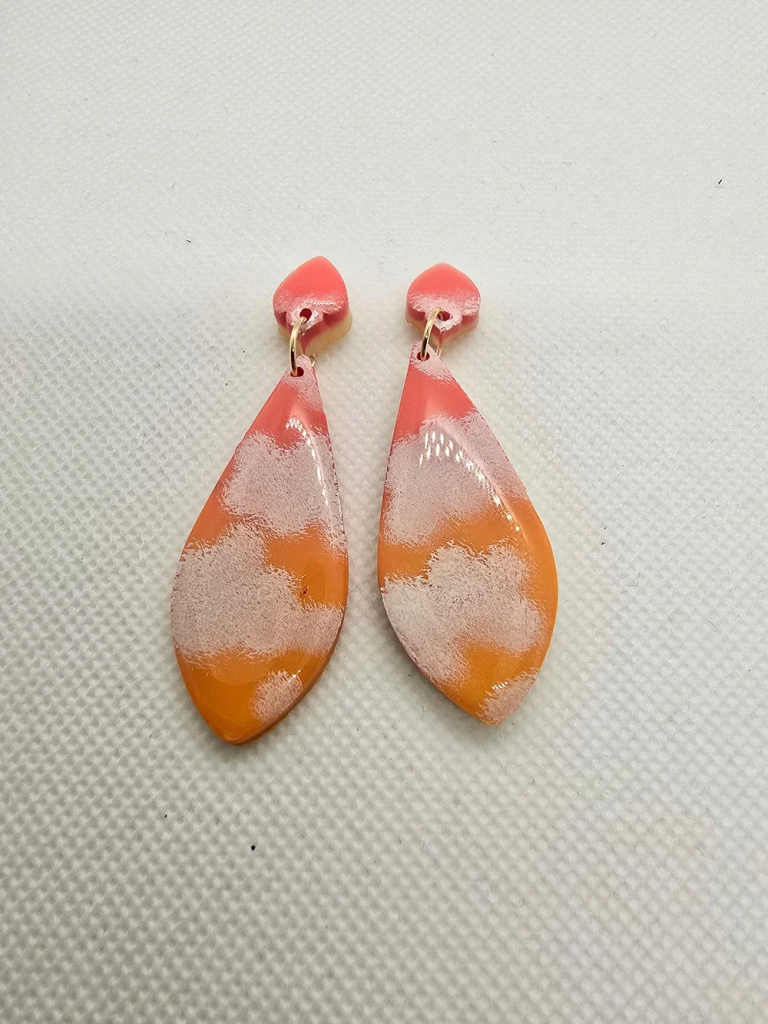Can You Paint Polymer Clay Earrings?
- Leah Milsom
- Feb 16
- 3 min read
Updated: Apr 10
by Lelalo
Polymer clay is a versatile material used for crafting jewellery, sculptures, and decorative items and here at Lelalo, we LOVE Polymer clay! One common question among jewellery makers is whether polymer clay earrings can be painted. The answer is a resounding yes! Painting your polymer clay pieces is straightforward however, does require consideration of the type of paint, preparation, and sealing you use to ensure a durable and professional-looking finish that keeps your handmade polymer clay creations beautiful.
Best Paints for Polymer Clay
Not all paints adhere well to polymer clay, so choosing the right type is important. The best options include:
Acrylic Paints– These are the most popular choice due to their vibrant colours, quick drying time, and easy application. Look for high-quality artist-grade acrylics for the best results.
Alcohol Inks – These work well for achieving a translucent, watercolor-like effect. They are best used on raw clay before baking.
Oil Paints – Although they take longer to dry, oil paints can create rich, deep colours and blend smoothly on baked clay.
Mica Powders and Pigments – While not technically paint, mica powders mixed with a clear medium can create shimmery, metallic effects.
Paint Pens – For adding fine details and intricate designs, acrylic or oil-based paint pens can be a great choice.

When to Paint Polymer Clay
You can paint polymer clay at different stages of the process:
Before Baking: Some artists prefer to apply paint or alcohol inks on raw clay before curing it in the oven. However, this can sometimes affect adhesion, and the heat may alter the colour slightly.
After Baking: My preferred method is to paint after baking. Painting on baked clay is the most common method, as it ensures the paint adheres properly without distortion and there’s no risk of colour changing. This is my favourite method as the oven is the part of the process I have the least control over.
How to Prepare Polymer Clay for Painting
Proper preparation ensures that the paint sticks well and lasts long. Follow these steps:
Bake the Clay Correctly – Follow the manufacturer’s instructions for baking time and temperature to avoid underbaking, which can make the surface too soft for painting.
Sand the Surface (Optional) – If you want a smoother painting surface, use fine-grit sandpaper to remove imperfections. I have never done this, however, if you’re looking to paint the entire surface this will make for good adhesion, if you’re adding details to a piece you want to avoid scratching the rest of the surface that won’t be painted as to not ruin your work.
Clean the Surface – Wipe the earrings with rubbing alcohol or a damp cloth to remove dust, fingerprints, or oils that could prevent the paint from adhering properly.
Use a Primer (Optional) – Some artists prefer to apply a thin layer of acrylic gesso to create a uniform painting surface.
Applying Paint to Polymer Clay
Use thin layers of paint rather than one thick coat to avoid cracking or peeling.
Allow each layer to dry completely before adding another to achieve even coverage.
For details, use fine brushes, dotting tools, paint pens, toothpicks, forks or other small items that can get the same effect for cheaper if you’re starting out.
Sealing Painted Polymer Clay Earrings
To protect the paint from wear, moisture, and chipping, apply a sealant. The best options include:
Varnish (Matte or Glossy) – Water-based polyurethane or acrylic varnish provides a durable finish.
Resin Coating – UV resin adds a thick, glossy, and professional-looking finish, or if brushed on, provide a thin protective layer(remember to clean brushes with acetate and do not expose UV resin to UV light before cleaning or your brushes will be ruined). To compare finishes here, my Shepherd’s Delight earrings have a thick coating to give a glossy domed top and my Jammy biscuits have a thin coat to add texture and seal in the colouring I’ve added.
Spray Sealants – A light spray of acrylic or UV-resistant varnish can help protect painted surfaces
Final Thoughts
Painting polymer clay earrings is a fantastic way to add colour, patterns, and artistic flair to your creations. Painting patterns can be easier than mixing them into the clay using Millefiori and therefore more accessible. By choosing the right paints, preparing the surface properly, and sealing your work, you can achieve long-lasting and stunning designs that honour your desired outcome. Whether you prefer bold acrylics, subtle inks, or shimmering mica powders, the possibilities for painted polymer clay earrings are endless!
Comments